Uncategorized
How to Book an Appointment for LTO Theoretical Driving Course (TDC) 2024
Published
2 months agoon
By
AdminNavigating the process of obtaining a driver’s license in the Philippines can be daunting, especially for first-time applicants. One of the crucial steps in this journey is completing the Land Transportation Office (LTO) Theoretical Driving Course (TDC). This comprehensive guide will cover everything you need to know about How to Book an Appointment for LTO Theoretical Driving Course (TDC) 2024 , including procedures, benefits, requirements, eligibility criteria, frequently asked questions, and a conclusive summary to help you prepare effectively.
Understanding the LTO Theoretical Driving Course (TDC)
The Theoretical Driving Course (TDC) is designed to educate prospective drivers about essential topics related to road safety, traffic regulations, and responsible driving. It aims to equip individuals with the knowledge necessary to navigate the complexities of the road and ensure safety for themselves and others.
Completing the TDC is crucial for obtaining a Student Driver’s Permit, which allows you to practice driving. After acquiring this permit, you can apply for a Non-Professional Driver’s License (NPDL) after one month, provided you meet all application requirements. The TDC can be completed online, at any LTO-accredited institution, or at an accredited Driver Education Center (DEC).
Key Topics Covered in the TDC
- Traffic Rules and Regulations: Understanding local traffic laws and the importance of following them.
- Road Safety: Techniques for safe driving, including defensive driving strategies.
- Traffic Signs and Signals: Identification and meaning of various traffic signs and signals.
- Basic Vehicle Operation: Fundamentals of how to operate a vehicle, including controls and maintenance.
- Accident Prevention: Strategies to minimize the risk of accidents and how to respond in emergencies.
Benefits of Completing the LTO Theoretical Driving Course (TDC) 2024
Completing the Theoretical Driving Course offers several significant benefits:
- Mandatory Requirement: The TDC is a prerequisite for obtaining a driver’s license, making it an essential step in the licensing process.
- Enhanced Knowledge: Participants gain a thorough understanding of traffic laws and driving safety, leading to more responsible driving behavior.
- Accident Reduction: By learning defensive driving techniques, you are better equipped to handle road situations, ultimately reducing the likelihood of accidents.
- Preparation for Practical Test: The knowledge gained in the TDC helps you perform better in the practical driving test, increasing your chances of passing.
- Confidence Building: With proper training, new drivers feel more confident behind the wheel, improving their overall driving experience.
Eligibility for the LTO Theoretical Driving Course (TDC) 2024
The Theoretical Driving Course is open to various applicants, including:
- First-Time Applicants: Individuals who are applying for a driver’s license for the first time must complete the TDC.
- Learner’s Permit Holders: Those with a learner’s permit who are preparing to transition to a full driver’s license.
- License Renewal Applicants: Drivers whose licenses have expired and need to renew them.
To be eligible for the TDC, applicants must meet the following requirements:
Requirements for the LTO Theoretical Driving Course (TDC) 2024
- Age Requirement: You must be at least 17 years old to enroll in the TDC.
- Valid Identification: A government-issued ID (e.g., passport, school ID) is required for verification purposes.
- Online Account: Applicants must create an account on the LTO online portal for booking an appointment.
- Payment: Be prepared to pay any applicable fees associated with the TDC.
Step-by-Step Procedure to How to Book an Appointment for LTO Theoretical Driving Course (TDC)
Booking an appointment for the LTO Theoretical Driving Course involves several straightforward steps. Follow this detailed guide to ensure a smooth process.
Step 1: Visit the LTO Official Website
Begin your journey by visiting the official LTO website at lto.gov.ph. The website is the primary resource for all information related to the TDC, including schedules, locations, and updates.
Step 2: Create an Account on the LTO Online Portal
To book an appointment, you’ll need to create an account on the LTO online portal. Follow these steps:
- Access the Online Portal: Locate the link to the online appointment system on the LTO website.
- Register: Click on the “Register” or “Create Account” option. Fill in your personal details, including:
- Full Name
- Email Address
- Contact Number
- Date of Birth
- Address
- Verify Your Account: After completing the registration, you will receive a verification email. Click on the link in the email to activate your account.
Step 3: Log In to Your Account
Once your account is verified, log in to the LTO online portal using your registered email and password. It’s essential to remember your login credentials for future use.
Step 4: Select the Theoretical Driving Course
After logging in, navigate to the “Book an Appointment” section. Here, select the option for the Theoretical Driving Course. This will take you to the next step in the booking process.
Step 5: Choose Your Preferred Date and Time
The system will display a calendar showing available dates and times for the TDC. Select the date and time that best suits your schedule. It’s advisable to choose a date that allows you enough time to prepare and gather any necessary documents.
Step 6: Fill Out Required Information
During the appointment booking process, you will be asked to provide additional personal information, including:
- Full Name
- Date of Birth
- Contact Number
- Email Address
- Home Address
Ensure that all information is accurate to avoid any complications on the day of your appointment.
Step 7: Review Your Appointment Details
Before finalizing your appointment, carefully review all the details you have provided. Confirm that your selected date, time, and location are correct. Making any changes at this stage can save you time later.
Step 8: Payment (if applicable)
Depending on the LTO’s policies, there may be a fee associated with the TDC. The online portal will guide you through the payment process, which may include options such as:
- Online bank transfer
- Mobile payment services (e.g., GCash, PayMaya)
- Payment in person at designated LTO offices
Make sure to retain your payment receipt as proof of transaction.
Step 9: Confirmation of Appointment
After successfully completing the booking process, you will receive a confirmation email containing all details of your scheduled TDC. Keep this email accessible, as you will need it on the day of your appointment.
What to Bring on the Day of Your Appointment
When attending your TDC appointment, it’s crucial to bring the following documents:
- Valid Identification: A government-issued ID that includes your photo and signature.
- Payment Receipt: If you made an online payment, bring a printed copy or digital version of your payment receipt.
- Additional Documents: Check the LTO website for any other documents that may be required.
Tips for a Smooth Appointment Experience
- Arrive Early: Aim to arrive at least 30 minutes before your scheduled appointment time. This will give you a buffer in case of unexpected delays.
- Dress Appropriately: While there is no strict dress code, wearing neat and appropriate clothing can help make a good impression.
- Follow Health Protocols: Be aware of any health and safety measures in place, such as wearing masks or maintaining social distancing.
- Stay Informed: Keep an eye on the LTO website or your email for any updates regarding your appointment, especially if you notice changes to local regulations.
What to Expect During the TDC
The Theoretical Driving Course is typically conducted in a classroom setting, and here’s what you can expect:
Course Duration
The TDC usually lasts about 8 hours, often divided into two sessions. Some locations may offer variations, so it’s essential to confirm the specifics when booking.
Instructors
The course will be led by certified driving instructors who are trained to provide comprehensive knowledge and answer any questions you may have.
Course Materials
Participants may receive course materials, such as handouts or presentations, to facilitate understanding of the topics covered. Take notes and engage actively during the sessions.
Assessment
At the end of the course, you may be required to complete a short assessment or quiz to test your understanding of the material. This step is essential for ensuring you grasp the key concepts of safe driving.
Completing the LTO Theoretical Driving Course (TDC) 2024
Upon successfully completing the course, you will receive a certificate of completion. This certificate is crucial for proceeding to the practical driving test, so ensure it is kept in a safe place.
Next Steps After Completing the
LTO Theoretical Driving Course (TDC) 2024
Once you have your TDC certificate, you are ready to book your practical driving test. Here’s a brief outline of the next steps:
Step 1: Schedule the Practical Driving Test
Log back into the LTO online portal and follow the same appointment booking process for the practical driving test.
Step 2: Practice Driving
Ensure you spend adequate time practicing your driving skills. Familiarize yourself with your vehicle and the road rules.
Step 3: Gather Required Documents
Prepare all necessary documents for the practical test, including your TDC certificate and any identification needed.
Step 4: Take the Practical Driving Test
On the day of your practical driving test, arrive early and follow the instructions provided by the LTO staff.
Step 5: Receive Your Driver’s License
Upon passing the practical test, you will be issued your driver’s license, allowing you to legally operate a vehicle in the Philippines.
Important Reminders for the Theoretical Driving Course (TDC)
Here are essential tips to keep in mind when attending the TDC:
- Course Availability: Both online and offline versions of the TDC are now offered by LTO DECs and accredited driving schools.
- Timeliness: Arrive on time to avoid missing any classes. Punctuality is crucial.
- Attendance: Don’t miss your scheduled class; failure to attend may result in removal from the participant list.
- Required Documents: Bring one valid government-issued ID and your original PSA birth certificate or PSA marriage certificate. Student applicants should also have their school IDs and proof of enrollment.
- Health Protocols: Carry your vaccination card, and ensure you wear a properly fitted face mask. Face shields are also required.
- Writing Materials: Bring pencils inked in black or blue for note-taking.
- Daily Capacity: Only 40 applicants will be accommodated each day, so plan accordingly.
- Proxy Attendance: If you cannot attend in person, arrange for a proxy to attend the class on your behalf.
- Dress Code: Avoid wearing slippers, shorts, or sleeveless shirts; adhere to a modest dress code.
- Snacks: Bring your own snacks, as food may not be provided.
- Course Content: The free course covers vital topics such as road signs, regulations, markings, maneuvers, courtesy, right of way, and safe driving practices.
By following these reminders, you’ll ensure a smoother experience in completing your Theoretical Driving Course.
Video: Free TDC Certificate for Student Driver’s Permit Applicants
Overview of Republic Act No. 10930
Republic Act No. 10930, signed into law in 2016, represents a significant legislative effort in the Philippines to strengthen the country’s land transportation system. The law addresses various aspects of road safety, vehicle registration, and driver licensing, all aimed at reducing accidents and enhancing public safety on the roads. This comprehensive piece of legislation reflects the government’s commitment to improving road safety and ensuring that drivers and vehicles comply with established standards.
Key Provisions of Republic Act No. 10930
1. Extended Validity of Driver’s Licenses
One of the most notable features of RA 10930 is the extension of the validity period of driver’s licenses. Under the previous law, licenses were valid for only three years. The new legislation extends this period to five years for most drivers. Additionally, for drivers with clean records—those who have not committed any violations for a specified period—the law allows for a 10-year validity. This provision is aimed at reducing the burden on both drivers and the Land Transportation Office (LTO) by minimizing the frequency of renewals and encouraging responsible driving behavior.
2. Stricter Licensing Requirements
To obtain or renew a driver’s license, applicants must undergo a more rigorous process. The law mandates comprehensive examinations that assess a driver’s knowledge of traffic rules, regulations, and safe driving practices. The objective is to ensure that all licensed drivers possess the necessary skills and understanding to operate a vehicle safely. Moreover, applicants are required to provide valid identification and undergo medical examinations to confirm their fitness to drive.
3. Centralized Driver’s License Database
RA 10930 also introduces the creation of a National Driver’s License Database. This database will serve as a centralized repository for all records related to driver’s licenses in the Philippines. By consolidating this information, the government aims to improve monitoring and enforcement of driving regulations. This measure is particularly crucial in combating issues such as license duplication and fraudulent registrations, which can compromise road safety.
4. Enhanced Vehicle Registration Processes
The law streamlines the registration process for motor vehicles, introducing more efficient procedures that aim to reduce the bureaucratic hurdles often faced by vehicle owners. It establishes clear guidelines for the registration, renewal, and transfer of ownership of vehicles, thereby promoting compliance with safety standards and regulations. Additionally, it emphasizes the importance of proper vehicle maintenance and safety checks as prerequisites for registration.
5. Increased Penalties for Traffic Violations
To deter reckless driving and other violations, RA 10930 imposes heavier penalties on offenders, particularly repeat violators. This includes increased fines, longer suspension periods for licenses, and, in severe cases, revocation of driving privileges. The law underscores the importance of accountability on the road, aiming to instill a culture of responsible driving among the public.
Road Safety and Accident Prevention
The overarching goal of RA 10930 is to improve road safety and reduce the incidence of traffic accidents in the Philippines. According to statistics, road accidents remain a leading cause of injuries and fatalities in the country. By implementing stricter licensing and registration requirements, the government seeks to ensure that only qualified individuals are allowed to operate vehicles.
Moreover, the law recognizes the need for continuous education and awareness campaigns to inform drivers about safe driving practices. It encourages local government units and relevant agencies to collaborate on initiatives that promote road safety, such as traffic education programs and public awareness campaigns.
Challenges in Implementation
While RA 10930 represents a significant step toward enhancing road safety, challenges in its implementation remain. One major concern is the capacity of the LTO to manage the increased workload resulting from the extended licensing and registration processes. The law’s success hinges on the effective execution of its provisions, which requires adequate resources, trained personnel, and updated technology.
Another challenge lies in public compliance. Despite the establishment of stricter regulations and penalties, ensuring that drivers adhere to these laws requires ongoing education and awareness efforts. The government must actively engage with the public to foster a culture of responsible driving and compliance with traffic regulations.
Future Directions
Moving forward, it is essential for the government and relevant agencies to continuously evaluate and refine the provisions of RA 10930. This includes monitoring the law’s impact on road safety, assessing the effectiveness of penalties, and identifying areas for improvement in the licensing and registration processes.
Additionally, the integration of technology can play a vital role in enhancing the efficiency of the LTO and improving overall road safety. For example, the use of digital platforms for license applications, renewals, and vehicle registrations can streamline processes and reduce waiting times for the public. Incorporating advanced data analytics can also help in identifying trends in traffic violations and accidents, allowing for targeted interventions.
5-Years Validity of Driver’s Licenses
Under Republic Act No. 10930, the validity period of driver’s licenses in the Philippines has been extended to five years for most drivers. Here are some key points regarding this provision:
1. Purpose of Extension
The extension aims to reduce the frequency of renewals, making the process more convenient for drivers. It also encourages responsible driving by rewarding those with clean driving records.
2. Eligibility for Longer Validity
Drivers who have no traffic violations for a specified period may qualify for even longer validity, up to ten years. This incentivizes good driving behavior.
3. Application and Renewal Process
To obtain or renew a license, drivers must pass a comprehensive examination that assesses their knowledge of traffic laws and safe driving practices. Medical examinations may also be required.
4. Impact on Road Safety
By extending the validity of licenses, the law aims to improve road safety by ensuring that drivers are better prepared and qualified to operate vehicles. It also helps streamline the licensing process, reducing congestion at LTO offices.
5. Implementation Challenges
While the extended validity offers benefits, it also poses challenges in ensuring compliance and effective monitoring of drivers’ records. Continuous education and awareness campaigns are essential to uphold the law’s objectives.
Overall, the five-year validity of driver’s licenses is a key element of RA 10930, designed to promote responsible driving and enhance the efficiency of the licensing system in the Philippines.
FAQs about the Theoretical Driving Course (TDC)
Q1: Where can I book an appointment for a TDC class?
Ans: You can book an appointment at various LTO branch offices, District Licensing and Regulatory Offices (DLROs), District Offices (DOs), Extension Offices (EOs), LTO Driver Education Centers (LTO DECs), and private LTO-accredited driving schools.
Q2: How much does the TDC cost?
Ans: The TDC is free at any LTO branch or LTO DEC nationwide. However, private driving schools typically charge between Php 1,500.00 and Php 2,500 for in-person sessions. Online TDCs offered by private schools are usually cheaper, ranging from Php 1,000.00 to Php 1,500.00.
Q3: What is the validity period of the TDC and its certificate? Does it expire?
Ans: Yes, the TDC certificate has a one-year validity period. It must be utilized within this time frame. After one year, the certificate is no longer valid as a prerequisite for the Practical Driving Course (PDC), although it can still be used to apply for a Non-Professional Driver’s License (NPDL) if the practical course is completed within the same period.
Q4: What is the passing score for the TDC exam?
Ans: To pass the TDC exam, you need to achieve at least 80% correct answers. The course has a validity period of 30 days, allowing you to retake the exam if necessary within that timeframe.
Q5: Is the TDC required when applying for a student driver’s permit?
Ans: Yes, the TDC is mandatory. You must present your TDC Certificate before applying for a student driver’s permit. This involves completing a 15-hour course and passing the TDC exam at an LTO Driver’s Education Center or an accredited driving school.
Conclusion
The Land Transportation Office (LTO) mandates the completion of the Theoretical Driving Course (TDC) as a prerequisite for obtaining a driver’s license. While this requirement adds an extra cost to the licensing process, it is essential for ensuring that drivers have the necessary knowledge for safe driving. If you aspire to get your license, enrolling in a TDC is a crucial step you cannot overlook.
You may like
Uncategorized
Can I drive automatic with a manual license in the Philippines?
Published
1 day agoon
November 20, 2024By
AdminIn the Philippines, the Land Transportation Office (LTO) regulates the issuance of driver’s licenses, including the rules that govern which types of vehicles a licensed driver is allowed to operate. A common question among new drivers is whether they can drive an automatic vehicle if they hold a manual driver’s license.
To answer this question, it’s important to understand the difference between manual and automatic licenses and the restrictions associated with each. Yes, in the Philippines, if you have a manual transmission (MT) license, you can drive an automatic transmission vehicle. Here’s how it works on Can I drive automatic with a manual license in the Philippines?
Understanding Manual and Automatic Driver’s Licenses
When you apply for a driver’s license in the Philippines, you must pass a driving test that involves demonstrating your ability to operate a vehicle. The LTO issues driver’s licenses based on the type of vehicle used during the test. The two main categories are:
- Manual Transmission License (Code 2): This is issued to individuals who pass their driving test using a manual transmission vehicle. A manual vehicle requires the driver to manually shift gears using a clutch and gearstick. Drivers with this license are generally proficient in operating manual cars and can drive both manual and automatic transmission vehicles.
- Automatic Transmission License (Code 3): This is given to drivers who pass their driving test using an automatic transmission vehicle. Automatic vehicles do not require the driver to manually shift gears, making them easier to drive. However, drivers with this restriction are limited to driving only automatic vehicles and are not authorized to operate manual transmission vehicles.
1. Manual Transmission (MT) License
- If you pass your driving test in a manual transmission vehicle, the LTO (Land Transportation Office) will issue you a driver’s license that permits you to drive both manual and automatic transmission vehicles.
- Restriction Code 2 (for light vehicles) or Restriction Code 3 (for heavy vehicles) on your license indicates that you are authorized to drive both manual and automatic transmission vehicles in the relevant vehicle class.
2. Automatic Transmission License
However, if you pass the driving test using an automatic transmission vehicle, your license may be restricted to only automatic vehicles. This means you won’t be legally allowed to drive a manual transmission vehicle.
Summary
- If you have a manual (MT) license, you can drive both manual and automatic transmission vehicles.
- If you have an automatic-only license, you can only drive automatic transmission vehicles. To drive a manual vehicle, you would need to take a practical driving test in a manual car to upgrade your license.
Understanding the Driver’s License System in the Philippines
In the Philippines, the LTO issues two types of licenses for private individuals:
- Non-professional driver’s license (for personal use, driving private vehicles).
- Professional driver’s license (for commercial use, such as public utility vehicles, delivery trucks, etc.).
Both of these licenses can be issued with different restriction codes, which specify the type of vehicle a driver is authorized to operate. For example:
- Restriction Code 1: Motorcycles (with or without sidecars).
- Restriction Code 2: Light vehicles such as cars, SUVs, and light trucks.
- Restriction Code 3: Heavy vehicles such as buses, large trucks, and other commercial vehicles.
Manual vs. Automatic Transmission Vehicles
The distinction between manual transmission and automatic transmission vehicles is crucial in this context:
- Manual Transmission (MT): Requires the driver to manually shift gears using a clutch and gear stick. This gives the driver more control over the vehicle, which some prefer for performance, fuel efficiency, or driving conditions.
- Automatic Transmission (AT): Automatically shifts the gears based on the vehicle’s speed and load. Automatic vehicles are generally considered easier to drive, especially for beginners, as the driver does not have to worry about manually changing gears.
What Does a Manual Driver’s License Allow?
If you pass your practical driving test in a manual transmission vehicle, you are issued a driver’s license that allows you to drive both manual and automatic transmission vehicles. This is because the driving test is conducted with the assumption that a person who can handle a manual vehicle will also be capable of operating an automatic one, which is considered simpler.
The restriction code that is typically issued for light vehicles is Restriction Code 2, which permits you to drive cars, light trucks, and other light motor vehicles. This license would allow you to legally operate both manual and automatic cars, regardless of the transmission type.
So, in the case of a manual driver’s license, whether it’s a Non-Professional or Professional License, the person is authorized to drive both manual and automatic transmission vehicles. This is true because manual transmission requires more skill and control over the vehicle, and if a person is proficient in driving a manual car, they can easily transition to an automatic.
Can You Drive an Automatic Vehicle with a Manual License?
Yes, you can. If you hold a manual driver’s license, you are legally permitted to drive both manual and automatic transmission vehicles. This is because the manual license allows you to drive vehicles with both transmission types, and the automatic transmission is simply easier to operate. Since you are already trained and tested to drive a manual car, you are assumed to have the skills necessary to drive an automatic car as well.
However, there is a distinction when you get a driver’s license based on an automatic transmission test, which we will explore next.
What Does an Automatic-Only License Mean?
If you took your practical driving test using an automatic transmission vehicle, your driver’s license may be restricted to automatic transmission vehicles only. In this case, your restriction code will still indicate that you can drive a light vehicle (restriction code 2) or heavy vehicle (restriction code 3), but it may also be understood that your license only allows you to drive automatic cars. This is because you were only tested and assessed for proficiency in driving an automatic vehicle, which does not require gear-shifting skills.
Can You Drive Manual Vehicles with an Automatic-Only License?
If you were issued a driver’s license based on a practical driving test in an automatic vehicle, no, you cannot legally drive a manual transmission vehicle. In this case, you are restricted to driving only automatic transmission vehicles. The LTO does not automatically permit you to drive manual vehicles unless you have passed a driving test using a manual car.
If you are issued an automatic-only license, it is important to note that this restriction only applies to driving manual transmission vehicles. You are still authorized to operate automatic transmission vehicles, but you cannot legally operate manual cars.
How to Upgrade From an Automatic-Only License to a Full License
If you have a driver’s license with a restriction for automatic transmission only and you wish to be able to drive manual vehicles, you will need to undergo the following steps:
- Take the Practical Driving Test Again in a Manual Car: You will need to reapply for a driving test, but this time, you must take the test using a manual transmission vehicle. The LTO requires that you demonstrate proficiency in driving a manual car before they remove the restriction on your license.
- Pass the Test and Request License Upgrade: Once you pass the driving test with a manual vehicle, you can request an upgrade to your driver’s license at the LTO. After successfully passing the test, you will be issued a new license without the automatic-only restriction, allowing you to legally drive both manual and automatic transmission vehicles.
Key Differences Between Manual and Automatic Licenses in the Philippines
- Manual Driver’s License: If you pass the driving test in a manual vehicle, you can drive both manual and automatic cars. This is the more flexible option, as it allows you to operate a wider range of vehicles.
- Automatic-Only License: If you pass the driving test in an automatic vehicle, you can only drive automatic transmission vehicles. To drive a manual car, you will need to take a new test in a manual vehicle to have your restriction lifted.
Why Does the LTO Have Different Rules for Manual and Automatic Licenses?
The LTO’s policy is designed to ensure that drivers are fully competent in handling the vehicles they are licensed to drive. Driving a manual transmission vehicle requires more coordination and skill (e.g., shifting gears while controlling the clutch), whereas driving an automatic transmission vehicle is simpler, as it doesn’t require manual gear shifting.
The reasoning behind allowing manual license holders to drive both manual and automatic cars is that a person who has mastered manual driving will also be able to handle automatic transmission without difficulty. Conversely, someone with an automatic-only license has not demonstrated proficiency in manual transmission, hence the restriction.
Practical Considerations and Legal Compliance
- Insurance: It’s important to note that in case of an accident, if you are caught driving a vehicle outside the scope of your license (for example, if you drive a manual car with an automatic-only license), you could face legal consequences, and your insurance policy might not cover the damages.
- Driving Test Requirements: In the Philippines, many people initially take their driving test in an automatic transmission vehicle because it’s easier for beginners. However, if you plan on driving manual transmission vehicles, it’s advisable to take the practical driving test in a manual car, so you are legally allowed to drive both types.
FAQS
1. Can I drive an automatic vehicle with a manual driver’s license in the Philippines?
- Yes, if you hold a manual driver’s license (Code 2), you can drive both manual and automatic vehicles. A manual license indicates that you have demonstrated proficiency in driving a manual car, and therefore, you are allowed to drive both types of vehicles.
2. What is the difference between a manual and automatic driver’s license in the Philippines?
- A manual driver’s license (Code 2) is issued when a driver passes the test using a manual transmission vehicle. Drivers with this license can operate both manual and automatic vehicles.
- An automatic driver’s license (Code 3) is issued when a driver passes the test using an automatic transmission vehicle. This restricts the driver to only driving automatic vehicles and not manual ones.
3. Can I drive a manual vehicle with an automatic driver’s license (Code 3)?
- No, if you have an automatic driver’s license (Code 3), you are legally restricted to driving only automatic vehicles. You are not authorized to operate manual vehicles unless you retake the driving test with a manual transmission vehicle to remove the restriction.
4. Why do I need a manual license to drive both manual and automatic vehicles?
- A manual license (Code 2) is given to drivers who have demonstrated the ability to handle a manual transmission vehicle, which requires more skill (like shifting gears manually). Therefore, those with a manual license are considered competent to drive both types of vehicles, whereas those with an automatic-only license are limited to automatic cars.
5. Can I switch my automatic license (Code 3) to a manual license (Code 2)?
- Yes, you can convert your automatic license (Code 3) to a manual license (Code 2). You need to retake the driving test using a manual transmission vehicle. Once you pass, you can apply to have the restriction removed, allowing you to drive both manual and automatic vehicles.
6. If I have a manual driver’s license, can I drive an automatic car?
- Yes, if you have a manual driver’s license (Code 2), you are permitted to drive both manual and automatic transmission vehicles without any restrictions.
7. Can I rent an automatic car with a manual license?
- Yes, if you have a manual license (Code 2), you can rent and drive both manual and automatic cars. The restriction only applies to drivers with a Code 3 license, which limits them to automatic vehicles.
8. What happens if I drive a manual car with a Code 3 license?
- If you have a Code 3 license and drive a manual car, it is considered illegal because you are not authorized to operate manual vehicles. To do so, you would need to pass a driving test in a manual transmission car to lift the restriction.
9. Is there any way to change my license restriction without retaking the driving test?
- Unfortunately, to remove a Code 3 restriction (automatic license) and drive manual vehicles, you will need to retake the driving test using a manual vehicle. There is no alternative method to change the restriction without passing the manual test.
10. Are the restrictions the same for professional and non-professional licenses?
- Yes, the restrictions for manual and automatic vehicles apply to both professional and non-professional licenses. If you pass the driving test using a manual vehicle, you are allowed to drive both types of cars regardless of whether your license is professional or non-professional. The main difference is that professional licenses are for commercial vehicle use.
11. Are there additional fees to lift the restriction from my automatic license?
- Yes, there may be additional fees for taking the driving test again or for processing the change in your license. These fees can vary depending on the LTO branch or the type of service.
12. What is the process to convert my license from automatic to manual?
- To convert your license from automatic-only (Code 3) to manual (Code 2), you need to:
- Take a driving test using a manual transmission vehicle.
- Pass the test.
- Apply to have the restriction removed at the LTO branch.
- Pay any applicable fees for the license change.
13. Can I drive both automatic and manual vehicles without any restrictions if I take the manual test?
- Yes, if you take and pass the driving test using a manual vehicle, you will not have any restrictions on your license. This means you can legally drive both manual and automatic transmission vehicles.
Conclusion
In summary, yes, you can drive an automatic transmission vehicle with a manual driver’s license in the Philippines. This is because the manual license gives you the ability to drive both manual and automatic vehicles. However, if you hold an automatic-only license, you are restricted to driving automatic vehicles only. To drive manual cars legally with an automatic-only license, you would need to take a driving test in a manual transmission vehicle and request an upgrade from the LTO.
Trending
-
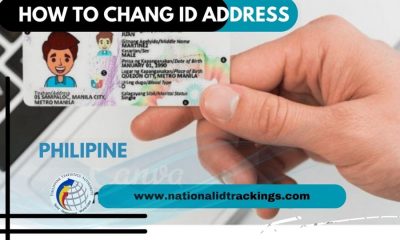
 Uncategorized6 months ago
Uncategorized6 months agoHow to change National ID Address
-
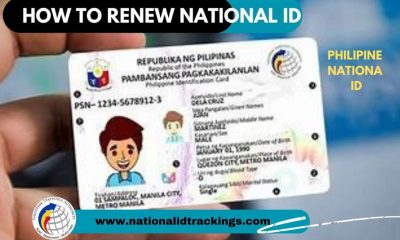
 Uncategorized6 months ago
Uncategorized6 months agoNational ID Renewal in Philippines Easy Process
-
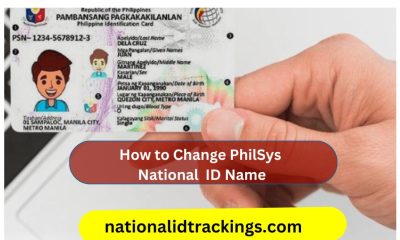
 Uncategorized6 months ago
Uncategorized6 months agoNational ID Name Change – National ID Card Name Change
-
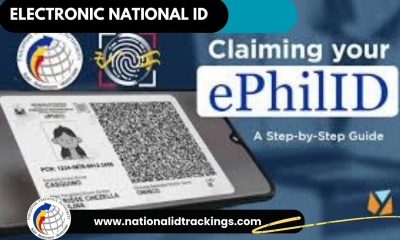
 Uncategorized6 months ago
Uncategorized6 months agoPhilSys ID Check – Electronic Phillipine Identification
-
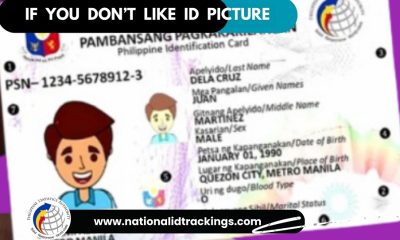
 Uncategorized6 months ago
Uncategorized6 months agoDon’t like Picture on PhilSys National ID ?
-
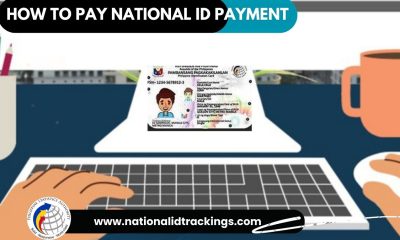
 Uncategorized6 months ago
Uncategorized6 months agoNational ID Payment – National ID Payment Philsys
-
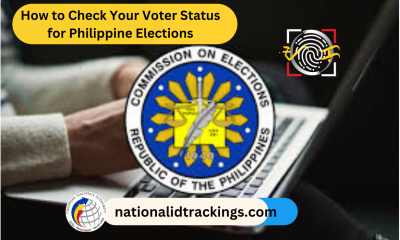
 Uncategorized5 months ago
Uncategorized5 months agoHow to Check Your Voter Status for Philippine Elections
-
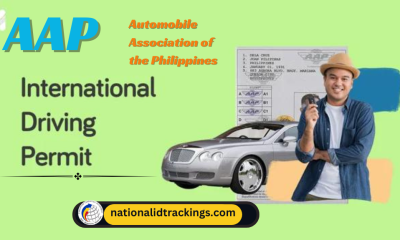
 Uncategorized5 months ago
Uncategorized5 months agoPhilippine International Driving Permit (PIDP)
-
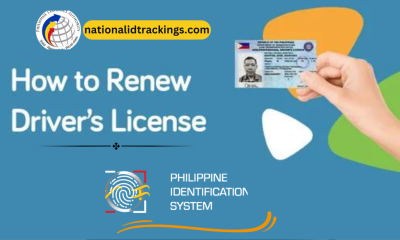
 Uncategorized5 months ago
Uncategorized5 months agoRenewal of Driver’s license in the Philippines
-

 Uncategorized3 months ago
Uncategorized3 months agoCan I Print My Digital National ID- A Detailed Guide
-
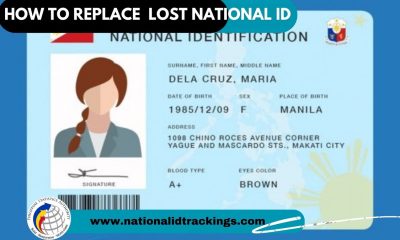
 Uncategorized6 months ago
Uncategorized6 months agoHow to Replace a Lost National ID Philippine
-

 Uncategorized6 months ago
Uncategorized6 months agoPhilSys National ID for Minors
